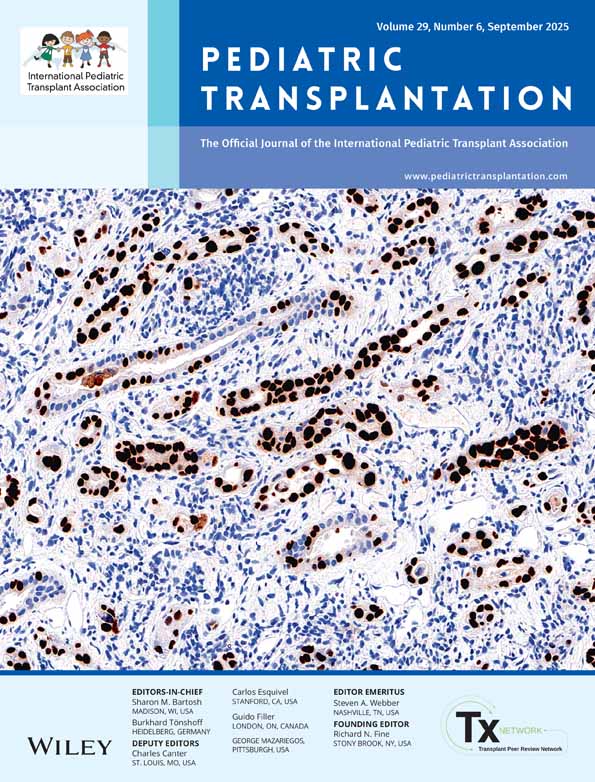Visceral Kaposi's sarcoma with intracranial metastasis: A rare complication of renal transplantation
Abstract
Abstract: The incidence of Kaposi's sarcoma (KS) has increased in solid organ transplantation recipients. This type of KS tends to be aggressive, involving lymph nodes, mucosa and visceral organs in about half of patients, sometimes in the absence of skin lesions. Brain involvement of KS has rarely been reported. A 16-yr-old Turkish boy underwent renal transplantation from his mother. The immunosuppressive regimen included prednisolone, cyclosporin A and azathioprine. Fourteen months later the azathioprine was changed to cyclophosphamide (3 mg/kg/day) because of the development of a nephrotic syndrome. After 12 weeks, the cyclophosphamide was changed to mycophenolate mofetil (MMF) to control the nephrotic syndrome. At this time his serum creatinine level rose to 2.1 mg/dL. Polyclonal or monoclonal antibodies were never given. Multiple intra-abdominal lymphadenopathy was detected on abdominal tomography at the 32nd month after renal transplantation. Kaposi's sarcoma was diagnosed via laparotomy and biopsy. He had a generalized tonic and clonic seizure and contrast enhanced cranial tomography showed two intracranial masses which had an abundant vascular component which caused a mild shift. One of the masses was removed via a burr-hole with the aim of diagnosis and treatment of the shift. A pathologic examination of the intracranial lesion was also reported as Kaposi's sarcoma. Herpes virus-8 DNA was detected by PCR in the intracranial lesion.




